The plant began operation only twenty-six days after Thomas Edison's first steam plant began operating on Pearl Street in New York (NL 46). On September 30, 1882, an Edison "K" type dynamo produced electricity from a water-powered turbine to light three buildings (two paper mills and the H.J. Rogers home), at rate of about 12 1/2 kilowatts. It is the first Edison hydroelectric central station to serve a system of private and commercial customers in North America. The story of its development provides keen insight into the nation's first experiences with the electric light.
Turbine
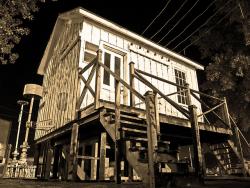
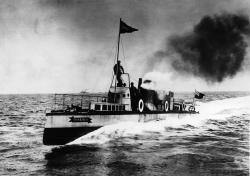
The Turbinia was the world's first turbine-driven ship. It attracted worldwide attention at the 1897 Spithead Naval Review by traveling more than 34 knots. This remarkable performance accelerated the acceptance of the steam turbine as an alternative to the steam reciprocating engine on ships as well as for central electric light and power stations. Sir Charles A. Parsons (1854-1931) invented (1884), developed, and promoted the steam turbine, as well as the design of the Turbinia. For this, he is considered among the outstanding technological innovators of all time.
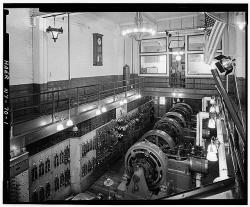
Steam and the inexpensive electricity it could produce brought about dramatic technical growth in the United States. Developed during the last century, reliable and efficient steam engines were the forerunners of today's massive generating facilities. A rare survivor of the period, the Pratt facility is the oldest generating plant of its kind in the Northeast and embodies the typical features of engines in a row, open-front marble switchboard, and an observation balcony at street level.
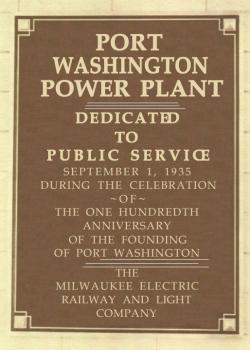
The Port Washington Power Plant of the Wisconsin Electric Company was the most thermally efficient steam power plant in the world for many years following its opening in 1935. Its design reflected the cumulative experience of the utility's engineers in burning pulverized coal at the Oneida Street Plant and the Lakeside Station in Milwaukee.
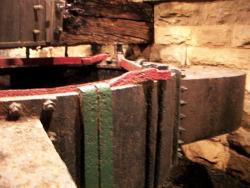
This reaction or "Scotch" turbine had as its antecedent the steam reaction wheel invented in Greek Alexandra by Hero around 100 B.C.. It found widespread hydraulic application in the United States from the beginning of the nineteenth century to mid-century when French-inspired hydraulic turbine design pushed reaction wheels into obsolence.
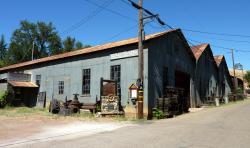
This is one of the earliest US foundry-machine shops remaining in operation and one of the few water powered. It was founded by Samuel N. Knight (1838-1913) to manufacture machinery for the gold mines of the Mother Lode region. Knight was one of several inventors experimenting with impulse turbines to exploit the area's abundant high-head water power for driving hoists, ore stamps, and other mining machinery.
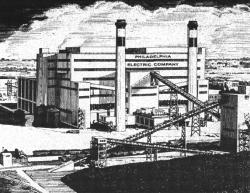
Operated by the Philadelphia Electric Company (PECO), now known as Exelon Corp., Eddystone Station Unit #1 is a 325 MW pulverized-coal-fired plant that pushed the technology of steam-electric generating plants. When built in 1960, engineers sought to make a more efficient plant using higher temperatures and pressures and larger machines. Previous experience at Philo 6 (Zanesville, Ohio, 1957) had demonstrated supercritical steam plants would work, so engineers pushed beyond that frontier to even larger machines and efficiencies.
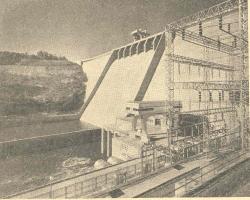
The integration of pump and turbine was the first of many to be installed in power-plant systems in the United States. It was the largest and most powerful in the world. As a "pump storage" unit in the Tennessee Valley Authority's system, it effected significant economies in the generation of electrical energy. The unit was designed by engineers of the Tennessee Valley Authority and the Allis-Chalmers Company. It was built by Allis-Chalmers.
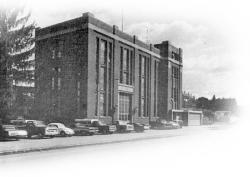
The Connecticut Light & Power Company pioneered the use of pumped storage in the United States at this hydroelectric station. First operated in 1929, the Rocky River Plant had two reversible pumps that somewhat resemble large hydroelectric turbines. This permitted significant improvements in the system efficiency of the company's network of hydroelectric and thermal-electric power generating plants. Water is pumped uphill through a penstock and stored in Lake Candlewood.
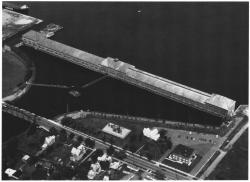
This low-head operating plant is representative of nineteenth-century hydropower-plant practice using many small turbines in contrast to twentieth-century use of few large turbines and generators. Its 40,000 horsepower capacity made it the largest in the country using turbines of American design (McCormick-Francis). The contemporary and larger Niagara installation used turbines of French design (Fourneyron). The entrepreneur of this plant was Francis Clergue, a lawyer, who employed as his chief engineer Hans A.E. von Schon, a German immigrant who had served with the U.S.
Innovations
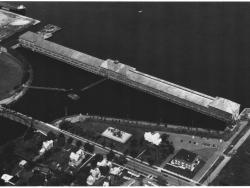
This low-head operating plant is representative of nineteenth-century hydropower-plant practice using many small turbines in contrast to twentieth-century use of few large turbines and generators. Its 40,000 horsepower capacity made it the largest in the country using turbines of American design…
Read More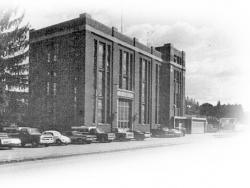
The Connecticut Light & Power Company pioneered the use of pumped storage in the United States at this hydroelectric station. First operated in 1929, the Rocky River Plant had two reversible pumps that somewhat resemble large hydroelectric turbines. This permitted significant improvements in…
Read More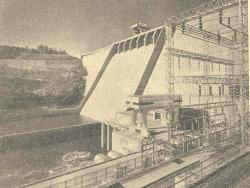
The integration of pump and turbine was the first of many to be installed in power-plant systems in the United States. It was the largest and most powerful in the world. As a "pump storage" unit in the Tennessee Valley Authority's system, it effected significant economies in the generation of…
Read More
Operated by the Philadelphia Electric Company (PECO), now known as Exelon Corp., Eddystone Station Unit #1 is a 325 MW pulverized-coal-fired plant that pushed the technology of steam-electric generating plants. When built in 1960, engineers sought to make a more efficient plant using higher…
Read More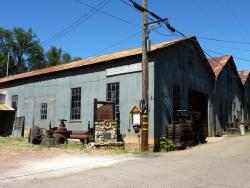
This is one of the earliest US foundry-machine shops remaining in operation and one of the few water powered. It was founded by Samuel N. Knight (1838-1913) to manufacture machinery for the gold mines of the …
Read More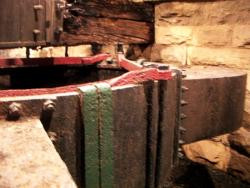
This reaction or "Scotch" turbine had as its antecedent the steam reaction wheel invented in Greek Alexandra by Hero around 100 B.C.. It found widespread hydraulic application in the United States from the beginning of the nineteenth century to mid-century when French-inspired hydraulic turbine…
Read More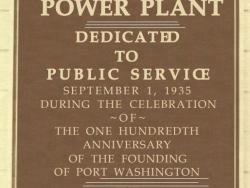
The Port Washington Power Plant of the Wisconsin Electric Company was the most thermally efficient steam power plant in the world for many years following its opening in 1935. Its design reflected the cumulative experience of the utility's engineers in burning pulverized coal at the Oneida…
Read More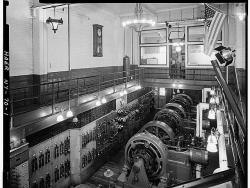
Steam and the inexpensive electricity it could produce brought about dramatic technical growth in the United States. Developed during the last century, reliable and efficient steam engines were the forerunners of today's massive generating facilities. A rare survivor of the period, the Pratt…
Read More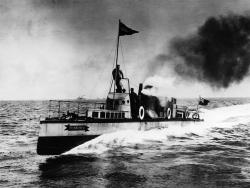
The Turbinia was the world's first turbine-driven ship. It attracted worldwide attention at the 1897 Spithead Naval Review by traveling more than 34 knots. This remarkable performance accelerated the acceptance of the steam turbine as an alternative to the steam reciprocating engine on ships as…
Read More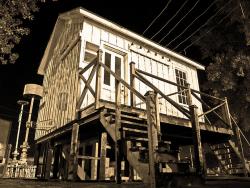
The plant began operation only twenty-six days after Thomas Edison's first steam plant began operating on Pearl Street in New York (NL 46). On September 30, 1882, an Edison "K" type dynamo produced electricity from a water-powered turbine to light three buildings (two paper mills and the H.J.…
Read More

